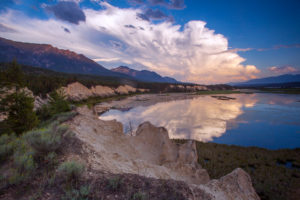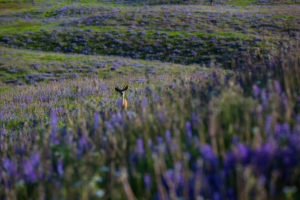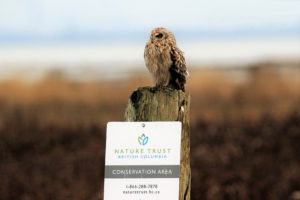This blog post was provided by Jes Hovanes, Communications Manager, The Nature Trust of British Columbia.
The Nature Trust of British Columbia is a non-profit land conservation organization with the mission of conserving ecologically significant land and protecting vulnerable species in British Columbia.
This mission is important and urgent, but we are faced with two challenging rivers that obstruct our path.

Challenges Facing Land Conservation
The first river runs straight and true. It is the material nature of our work – we are in the business of conserving land and continuously caring for it. No new land will ever be created. The cost of land keeps rising and the maintenance and management of land is labour intensive.
Since 1971, we have conserved more than 500 properties consisting of over 178,000 acres of land in the most ecologically sensitive areas of the province. Countless vulnerable species live on, migrate over, burrow under, and swim through these properties. Some of these places include plant and animal communities found nowhere else in the world.
We use a science-based approach to identify properties with high ecological values and use the latest technology to expand our understanding and enhance these values through our land management work. We have identified many properties that would increase habitat and the chance of survival for many endangered species, if we could conserve them. But we need the funds to make this happen.
With development pressure, the cost of land keeps rising and each year we have to make hard decisions on which properties we can conserve and which ones we cannot, due to limited resources.

The second river winds in circles and eddies. We are all faced with the overwhelming problem of climate change and the countless issues that it causes. People know that protecting forests, wetlands and grasslands helps control carbon and mitigate climate change, but they may be unsure about how they can help. Land trusts like The Nature Trust of BC can work on their behalf to help fight climate change.
Saving Our Lands Through Conservation
A major hurdle in the work of conservation is cutting through the noise of our busy, hectic society to reveal the consistent approach of conservation to address some of our most pressing climate problems. For fifty years, one property at time, we have been working to protect biodiversity and mitigate climate change. It is not flashy and it is not loud so it is rarely covered in the news.

People can make a difference. We are grateful every day for our donors, for the people in communities across the province who help us care for the land and the species that live there. We hope that through our work more people will come to see land conservation as something they can support and the precious lands we protect as something that benefits us all.
To celebrate CanadaHelps’ 20th anniversary, The Nature Trust of British Columbia took part in a video series to highlight how charities touch all of our lives, every day. Watch how The Nature Trust of British Columbia is making a big impact in our film below. And watch the rest of the video series on our website.